


Research Article
Cheng Cheng*, Rita Espanha
Correspondence Address :
School of Sociology and Public Policy
University Institute of Lisbon
Portugal
Received on: May 26, 2021, Accepted on: June 08, 2021, Published on: June 14, 2021
Citation: Cheng Cheng, Rita Espanha (2021). Association of Sina-microblog Use with Knowledge, Attitude and Practices Towards COVID-19 Control in China
Copyright: © 2021 Cheng Cheng, et al. This is an open-access article distributed under the terms of the Creative Commons Attribution License, which permits unrestricted use, distribution, and reproduction in any medium, provided the original author and source are credited.
Aim: During the ongoing wave of the COVID-19 pandemic, there is a recognized need for utilizing mobile social media to facilitate the dissemination of information and to promote public engagement in controlling COVID-19. This paper seeks to explore the relationships between the frequency of use of Sina-microblog, satisfaction with this use, COVID-19- related knowledge, health attitudes and the uptake of precautionary measures.
Subject and Methods: An online survey provided quantitative data from 296 participants. The approach of partial least squares structural equation modeling (PLS-SEM) was chosen, using SMART PLS 3.3.
Results: Satisfaction with Sina-microblog use has a positive effect on frequency of use (β=0.641, P<0.01), knowledge enhancement (β=0.487, P<0.01), health attitudes (β=0.366, P<0.01) and ultimate practice regarding the control of COVID-19 (β=0.322, P<0.01). This research confirms that knowledge enhancement can contribute to better health outcomes (β=0.672, P<0.01) and correct health attitude is positively associated with the uptake of COVID-19-related precautions (β=0.597, P<0.01).
Conclusion: In general, the findings presented in this paper add to our understanding of the necessity of improving satisfaction with social media use in the context of COVID-19.
Keywords: Sina-microblog use, KAPs model, Health communication, COVID-19 pandemic, Public health
Introduction
Since coronavirus disease (COVID-19) was declared as a Public Health Emergency of International Concern by WHO on 30 January 2020, there have been over 40 million confirmed cases globally, including more than 2.7 million deaths (WHO, 2021). The coronavirus pandemic has been considered as one of the most serious health crises, causing not only large-scale loss of life but also current economic downturn [1]. Until January 2021, the number of total infected cases in China reached over 80 thousand and there had been more than 4100 deaths. Generally, prior studies have shown the advantages of health communication delivered through social media platforms, including low cost, speed, more interactive activities, low barriers to access, and the large dissemination range [2]. Although many strategies have been discussed in previous studies on responses to past health crises, several challenges have emerged during the unprecedented COVID-19 threat. Here, for instance, there are a few prominent problems caused by infodemic and a remarkable amount of misinformation on social media [3]. Additionally, several studies have pointed out the adverse impact of social media use on public mental health during the wave of COVID-19 [4]. Up to date, various reports, preventative measures, means of improving health knowledge, and governmental alerts have been widely disseminated throughout different social media platforms all over the world. In this regard, recent studies have recognized that relevant features of social media, including faste information dissemination, interactive characteristics, and more reliable sources can contribute to bridging gaps in public knowledge as well as reducing isolation [5]. More importantly, it has been revealed that social media platforms are useful not only to convey real-time news but also to promote public engagement in pandemic control [6]. As one of the most influential social media in China, Sina-microblog has been considered as the “Chinese Twitter,” with over 550 million monthly active users in 2020, accounting for 39% of the total population [7]. Given its growing importance and reach, Sina-microblog has become a key source for the Chinese to obtain information regarding this unknown and ongoing pandemic threat [8]. According to a survey conducted among more than 3000 social media users in China, over half of respondents encountered information more frequently via social media during the outbreak of COVID-19. According to the 44th China Statistical Report on Internet Development, there have more than 139,270 official accounts registered on the Sinamicroblog platform by government departments at all levels. In February 2020, official government accounts totally posted over 1.43 million blogs relevant to COVID-19. From a practical perspective, during the early stages of the COVID-19 outbreak in China, Sina-microblog exerted critical influence on Chinese values and behavioral outcomes. As uptake of recommended measures has been considered as the primary objective of a health campaign during the pandemic control, understanding underlying behavior mechanisms can contribute to delivering more targeted and effective health interventions via social media platforms during the global health crisis [9]. While some research has been carried out on health behaviors of social media users, there is a current paucity of empirical research describing the relationship between Sinamicroblog use and health outcomes regarding COVID-19 control based on KAPs model (Knowledge, Attitudes, and Practices model). In particular, research on the subject has been mostly restricted on limited comparisons of different impacts of usage frequency and user satisfaction level on health outcomes. In other words, what is not yet clear is the relationship of satisfaction level of social media users and their health behaviors during the outbreak of COVID-19. Therefore, this study seeks to obtain data which will help to address existing research gaps. There are three primary aims of this study: a) To determine how Sina-microblog use influences the uptake of precautionary behaviors during the COVID-19 outbreak; b) To examine the KAPs model among Sinamicroblog users; c) To ascertain either the important impact of user satisfaction level or the usage frequency on public knowledge enhancement as well as attitude and behavior changes related to COVID-19 control.
Research Model and Study Hypothesis
To establish the association between variables and explore the contributing factors affecting users’ precautionary behaviors, we developed a research model based on the knowledge, attitude and practices model (KAPs). In the domain of health communication, the KAPs model was employed as a theoretical foundation to examine the hypothesized relationships of what people know, how they feel and how they eventually behaved during past epidemic crises [10]. In this study, knowledge acquisition refers to public understanding of the COVID-19 pandemic, including its symptoms, transmission and prevention [11]. Health attitude refers to public confidence and agreement in general about COVID-19 control [12]. In the realm of protective behaviors, it refers to precautionary strategies recommended by Chinese health authorities to mitigate the chances of being infected with COVID-19, including hand washing, mask-wearing, social distancing, staying at home and disinfecting surfaces daily [13].
Based on the review of existing literature, considering both satisfaction with and frequency of use of Sina-microblog can provide a more comprehensive understanding about the impact of its use. Previous studies have demonstrated that social media use has a direct influence on public health knowledge and attitude, which will eventually change their behaviors [14,15]. Furthermore, social media platforms have been recognized as an essential information sources to convey scientific knowledge and preventive recommendations during public health crises [16]. Grounded in previous literature, we propose the following research hypotheses:
H1: Increased frequency of Sina-microblog use couldcontribute to enhancement of public COVID-19-related knowledge
H2: Increased frequency of Sina-microblog use has a positive influence on forming users’ appropriate health attitudes regarding COVID-19 control.
Given the earlier conclusions regarding social media satisfaction, the extent to which mobile social media meet users informational and social requirements was considered [17]. Academic researchers have demonstrated that increased levels of satisfaction can yield positive results for continued use of social media [18]. Past studies further reported that satisfied social media users would be more likely to access and engage with social media [19]. Therefore, it is reasonable to assume that satisfied Sina-microblog users would be more likely to remain receptive to COVID-19-related knowledge and form health attitudes as well. As such, we posit the hypotheses:
H3: Users’ satisfaction can increase the frequency of Sinamicroblog use.
H4 & H5: Users’ satisfaction is positively associated both with COVID-19-related knowledge enhancement and appropriate health attitudes.
In the literature, health knowledge has been considered as a precondition of behavioral changes in the domain of health communication [20]. In other words, when facing uncertainty, people who obtain sufficient knowledge are more likely to adopt precautionary measures [21]. In contrast, the absence of information can increase public uncertainty and anxiety, while competent information can contribute to forming accurate perceptions (Bates et al., 2020). Except a greater COVID-19- related knowledge, health attitudes are associated with ultimate actions as well [22,23]. Hence, we hypothesize:
H6: Knowledge about COVID-19 is positively associated with the uptake of precautions regarding COVID-19 control.
H7: Knowledge about COVID-19 is positively associated withagreement and confidence in controlling COVID-19.
H8: Correct and optimistic attitudes can positively influenceuptake of precautions to prevent infection by COVID-19.
Methods
Study Setting and Data Collection
In this paper, an online survey was conducted from the 1 to 12 February 2021. Firstly, we utilized the Tencent questionnaire platform to design the questionnaire. To adapt to the context of China, the questionnaire was translated into Chinese and distributed both through WeChat and the Sina-microblog platform. The questionnaire is anonymous, and participants need to be at least 18 years of age. The questionnaire and consent documents were approved by the Ethical Committee of the University Institute of Lisbon (Code: 110/2020).
Measurement
Frequency of Sina-microblog use
The questionnaire begins by asking respondents which social media platforms they have used frequently during the COVID-19 pandemic. Next question was set up to ask whether the participants used the Sina-microblog platform during the COVID-19 crisis (yes or no). The participants have to state how many minutes they spend on Sina-microblog every day. It then proceeds to measure how many times per day they use Sinamicroblog, with response ranging from 1 – rarely use Sinamicroblog to 5 – use this platform frequently. Finally, participants were asked whether they utilized Sina-microblog platform more frequently during the COVID-19 outbreak than before; responses were measured on a 5-point scale ranging from 1 = definitely disagree to 5 = definitely agree.
Sina-microblog user satisfaction
Respondents were asked whether they are satisfied with the information delivered, services and functions of the Sinamicroblog platform. All items were measured with anchors ranging from 1 representing strongly unsatisfied to 5 representing strongly satisfied. Further, there was a multiple-choice question about why they used Sina-microblog during the COVID-19 crisis.
COVID-19-related knowledge
Participants were asked how much they knew about coronavirus disease, regarding its symptoms, transmission, and prevention. In this regard, responses were measured on a 5-point scale ranging from 1 = know nothing 5= know a lot. In addition, we set up two multiple-choice questions, including “Which topic of COVID-19-related information is more essential to you? and On the Sina-microblog platform, which information source do you find trustworthy?”
Attitude
In this aspect, we utilized the validated items derived from prior studies in order to ensure content validity. Items for measuring attitudes to controlling COVID-19 were rated on a 5-point scale from 1 = definitely disagree to 5 = definitely agree. Participants were asked about their agreement with COVID-19 control and their confidence in ultimately wining the fight against it.
Uptake of preventive behaviors
To assess the uptake of preventive behaviors, participants were asked to rate whether they followed the preventive measures and regulations well during the COVID-19 pandemic. Respondents answered using a 5-point scale ranging from 1 = very badly to 5 = very well.
Statistical Analysis
After downloading the data from the Tencent questionnaire platform in .csv format, initial descriptive statistics were carried out to present the sample demographic profile and other basic information. As partial least squares structural equation modeling (PLS-SEM) is a common approach to test models and examine the relationships among different variables, in this paper, PLS-SEM was implemented through Smart PLS3.3. First, we assessed the reliability and validity of the structural model. Then, we ran bootstrapping in order to explore the relationships
as well as test the hypotheses.
Results
Descriptive Analysis
As shown in Table 1, We recruited a total of 296 participants who met the inclusion criteria, with 66.6 % female and 33.4% male. Statistically, the results offered evidence of the popularity of the Sina-microblog platform, with most of those surveyed indicating that the Sina-microblog platform is definitely their first choice, accounting for 74.4%, followed by WeChat (68.6%), TikTok (29.1%) and QQ (21.6%). Of the 296 participants who responded to this questionnaire, 253 reported that they utilized Sina-microblog platform during the COVID-19 pandemic, accounting for 85.5% of the total. Among 253 respondents, the average time reported for spending on Sina-microblog every day reached around 63.8 minutes. Among 253 Sina-microblog users, 71.9% of them access Sina-microblog with the aim of searching for or obtaining real-time information. For nearly half of participants, establishing a social connection with others is also the reason. Additionally, several participants expressed a desire to obtain up-to-date news and policies regarding COVID-19 (77.5%), followed by health knowledge (65.2%) and updated data (62.1%). Entertainment also is needed, ranked in fourth place. Regarding the information source, accounts created by governments and health authorities on the Sina-microblog platform are trusted by 70.8% of respondents, and doctors by 66.4%.
Measurement Model Analysis
An initial analysis was run to check the reliability and validity of the constructs. According to previous studies, reliability can be measured by indicator reliability and internal consistency [24]. In the literature, composite reliability (CR) and factor loadings have been commonly utilized to measure reliability in PLS [25]. Additionally, to test validity, we assessed convergent and discriminant validity [26]. In this regard, convergent validity has been measured using average variance explained (AVE). Discriminant validity was assessed based on both the Fornell-Larcker criterion and the heterotrait-monotrait ratio criterion. In common practice, previous studies have found that HTMT values close to 1 demonstrate a lack of discriminant validity, while HTMT values below the threshold of 0.85 indicate discriminant validity [27]. Finally, after dropping items with a loading below 0.7, there are 12 items adopted to measure five constructs in our model. The summary of the quality criteria is displayed in Table 2 where it can be observed that the composite reliability and item loadings of all constructs is greater above 0.7. AVE for all constructs exceeds 0.5. In addition, multicollinearity also should be considered, and thus we examined the variance inflation factors (VIF). It is apparent from this table that the VIF of all constructs is well below 5. As shown in Tables 3 and 4, the results indicate that discriminant validity between all these constructs has been established. As mentioned above, we ensured the reliability and validity of each construct.
Hypothesis Testing
To estimate the theoretical model and examine the proposed hypothesis, PLS bootstrapping with 5000 subsamples was run. Overall, the following indices of the proposed model indicated an acceptable fit, SRMR = 0.034, NFI = 0.939. In practical terms, an effect size (f2) needs to be shown, with below 0.02 considered low, between 0.02 and 0.15 medium and above 0.5 large [28]. As shown in Figure 1, solid lines present significant relationships, whereas dotted lines indicate insignificant paths. The direct effects are displayed in Table 5. No significant correlation was found between frequency of Sina-microblog use and COVID-19-related knowledge enhancement or health attitude. Based on these results, H1 and H2 were refuted. Further statistical tests revealed that Sina-microblog satisfaction was positively associated with COVID-19-related knowledge enhancement. However, there was no evidence that Sina-microblog satisfaction has a direct association with promoting health attitudes. Thus, H4 was supported, whereas H5 was refuted. As expected, the respondents who reported a high level of satisfaction utilize Sina-microblog more frequently, and thus H3 was supported. Regarding the KAPs model, COVID-19- related knowledge enhancement appeared to be a significant factor, positively influencing users’ health attitudes. Contrary to expectations in H7, knowledge enhancement did not exert a direct effect on ultimate precautionary behaviors. A positive correlation was found between health attitude and preventive behaviors. As mentioned above, H7 and H8 were supported, but H6 was not. The mediation effects and the total effects obtained from the current analysis are summarized in Table 6 and Table 7. As shown in Table 6, it is apparent that usage frequency and users’ satisfaction level can’t contribute to the uptake of preventive measures only through attitude changes. COVID-19- related knowledge significantly impacts ultimate preventive practice through health attitude. It can be seen in table 7 that satisfaction with Sina-microblog platform has a stronger effect on knowledge enhancement through frequency of Sina-microblog use. And what stands out in this table is that the indirect effect of Sina-microblog use satisfaction on COVID-19-related health attitudes and uptake of preventive behaviors through knowledge enhancement was proved.
Discussion
In present study, no statistically significant correlation was observed between frequency of Sina-microblog use and changes regarding knowledge, attitude or behaviors. A possible explanation for this might be that some users haven’t obtained desired information from Sina microblog platform. These results are in accord with recent studies indicating the necessity of understanding public demand rather than only release information on social media [29]. Another possible explanation for this is that users only access social media rather than engagement, hence, active use can’t contribute to positive attitude of users. In this regard, it supports evidence from a great deal of the previous work which showed the importance of promoting engagement level of social media users during a global crisis [30]. Additionally, the relationship of knowledge, attitude and practices corroborates these earlier findings [31]. It is somewhat surprising that no direct association between knowledge and behaviors was noted in this condition. It is difficult to explain this result, but it may be that these users more benefitted from a proliferation of Chinese stories delivering on social media during the COVID-19 pandemic, which resonates in their mind. As mentioned earlier, the most obvious finding to emerge from the analysis is the important roles of improving satisfaction with Sina-microblog use on influencing public knowledge, health attitude and practices related to COVID-19 control. Therefore, one of the issues that emerges from these findings is the necessity of adopting communication strategies aimed at improving user satisfaction.
According to uses and gratification theory (UGT), users usually choose media which can satisfy their information, social and emotional needs better [32]. In other words, during the wave of an unknown health threat, mobile social media has to take responsibility for accelerating the dissemination of information, filling gaps in public knowledge, and handling public uncertainty, as well as bridging social connections [33,34]. In this study, obtaining and searching for useful information are the primary motivations for utilizing Sina-microblog rather than entertainment. A possible explanation for this might be an urgent public concern relating to appropriate information about this unknown virus. From this perspective, Sina-microblog has to ensure consistent propagation of information aligned with the public interest and needs in terms of updated data, real-time news and health knowledge. In this regard, the quality and credibility of online messages have been considered as key determinants in influencing user satisfaction [35]. Besides, a considerable body of literature has grown up around the theme of COVID-19 infodemic and false information circulating on mobile social media [36]. It has been conclusively illustrated those rumors and misinformation have negatively impacted not only on user satisfaction but also on health outcomes [37]. By and large, in the case of COVID-19, the supervisors should cooperate with the accounts with a large number of fans and place more attention on the usage of hashtags to fight against false information [21,38]. From the findings of this study, posts delivered by health authorities, doctors and traditional media are more trustworthy for Sina-microblog users. Hence, the Sina-microblog platform should strengthen cooperation with all such key opinion leaders with the aim of refuting rumors and facilitating communication. Moreover, in accordance with previous studies, these findings suggest that it is vitally important to balance entertainment and the propagation of preventive measures on social media platforms in the context of COVID-19 [39].
This study produced results which corroborate the findings of a great deal of previous work, which showed that the public relies on social media to maintain social connections with others [40]. Specifically, Sina-microblog should take meeting users’ basic needs for social interaction and mental health into account during the ongoing fight against COVID-19. These results have important implications for emphasizing media richness and user engagement behaviors. In this regard, one of the evident advantages of the Sina-microblog platform comes from its powerful live streaming function, which may be used to find new ways of establishing multiple relationship between users.
Conclusion
Given the ongoing fight against COVID-19 around the world, there has been a surge of interest in the effects of mobile social media in enriching health communication. To sum up, one of the more significant findings to emerge from this study is that satisfaction with Sina-microblog use exerts more direct and indirect influence on knowledge, health attitudes and protective behaviors of users than usage frequency. In practical, these findings may be taken to indicate that communicators have to put more emphasis on the information, social and emotional needs of users during the wave of COVID-19, with the aim of improving their satisfaction level. It might help us to find new ways of considering the impact of social media use on health outcomes as well. In addition, these results also provide some support for adopting KAPs model and employing the approach of partial least squares structural equation modeling in the studies focusing on Sina microblog users under the context of COVID-19. The most important limitation lies in the fact that there are less than three measurement items when assessing constructs of frequency, satisfaction, attitude and practice. Moreover, the responses relating to COVID-19-related knowledge, health attitudes and ultimate preventive behaviors were subjective and relied on participants’ self-report. This research has raised many questions in need of further investigation. For instance, it would be interesting to explore the user satisfaction of different social media platforms and compare their changes of knowledge, attitude and behaviors. More broadly, research is also needed to develop a deeper understanding of the relationship between satisfaction with social media use and positive and negative health attitudes. Taken together, greater efforts are needed to ensure full advantages of mobile social media is taken to satisfy users demands during the COVID-19 pandemic [41,42].
Supplementary information
Authorship clarified: Cheng Cheng and Rita Espanha contributed equally to this work, and they approved the version to be published.
Funding: The proofreading of this article was supported by FCT (Fundação para a Ciência e a Tecnologia) in the scope of the Strategic Funding UIDB/03126/2020.
Conflicts of interest: Cheng Cheng and Rita Espanha have no conflicts of interest to declare that are relevant to the content of the article.
Ethics approval: The questionnaire and consent documents were approved by the Ethical Committee of the University Institute of Lisbon (Jan.2021, Lisbon, Portugal).
Consent for publication: Not applicable.
Availability of data and material: Not applicable.
Code availability: Not applicable.
1. Ebrahim SH, Ahmed QA, Gozzer E, et al. Covid-19 and community mitigation strategies in a pandemic. 2020.
2. Park M. Information sharing to promote risky health behavior on social media. Journal of Health. Communication. 2019;24(4):359-367.
3. RodriÌguez CP, Carballido BV, Redondo-Sama G, et al. False news around COVID-19 circulated less on Sina Weibo than on Twitter. How to overcome false information? International and Multidisciplinary Journal of Social Sciences, 2020;1-22.
4. Pahayahay A, Khalili-Mahani N. What media helps, what media hurts: A mixed methods survey study of coping with COVID-19 using the media repertoire framework and the appraisal theory of stress. Journal of Medical Internet Research, 2020;22(8): e20186.
5. González-Padilla DA, Tortolero-Blanco L. Social media influence in the COVID-19 pandemic. International braz j urol. 2020;46: 120-124.
6. Malecki K, Keating JA, Safdar N. Crisis communication and public perception of COVID-19 risk in the era of social media. Clinical Infectious Diseases. 2020;72(4):697-702.
7. Hua J, Shaw R. Corona virus (Covid-19) “infodemic” and emerging issues through. a data lens: The case of china. International journal of environmental research and public health. 2020;17(7):2309.
8. Carvajal-Miranda C, Mañas-Viniegra L, Liang L. Online discourse in the context of COVID-19, the first health crisis in China after the advent of mobile social media: A Content Analysis of China’s Weibo and Baidu. Social Sciences. 2020;9(10):167.
9. Ludolph R, Schulz PJ, Chen L. Investigating the effects of mass media exposure on the uptake of preventive measures by Hong Kong residents during the 2015 MERS outbreak: The mediating role of interpersonal communication and the perception of concern. Journal of Health Communication. 2018;23(1): 1-8.
10. Alnakli Z. Saudi Arabians’ health beliefs pertaining to Middle East Respiratory Syndrome–Coronavirus (MERS-CoV): knowledge, attitudes, and practices (KAP) assessment. 2016.
11. Roy D, Tripathy S, Kar SK, et al. Study of knowledge, attitude, anxiety & perceived mental healthcare need in Indian population during COVID-19 pandemic. Asian Journal of Psychiatry. 2020;51: 102083.
12. Bates BR, Villegas Botero A, Grijalva MJ. Knowledge, attitudes, and practices towards COVID-19 among Colombians during the outbreak:
an online cross-sectional survey. J Community Health. 2020;13(4): 262- 270.
13. Zhong BL, Luo W, Li HM, et al. Knowledge, attitudes, and practices towards COVID-19 among Chinese residents during the rapid rise period of the COVID-19 outbreak: a quick online cross-sectional survey. Int J Biol Sci. 2020;16(10): 1745-1752.
14. Oh SH, Lee SY, Han C. The effects of social media use on preventive behaviors during infectious disease outbreaks: The mediating role of
self-relevant emotions and public risk perception. J Health Commun. 2021;36(8):972-981.
15. Zhang X, Zhou S. Clicking health risk messages on social media: moderated mediation paths through perceived threat, perceived efficacy, and fear arousal. J Health Commun. 2019;34(11):1359-1368.
16. Garfin DR, Silver RC, Holman EA. The novel coronavirus (COVID-2019) outbreak: Amplification of public health consequences by media exposure. J Health Psychol. 2020;39(5):355-357.
17. Au N, Ngai EW, Cheng TE. A critical review of end-user information system satisfaction research and a new research framework. Omega. 2002;30(6):451-478.
18. Lim JS, Al-Aali A, Heinrichs JH, et al. Testing alternative models of individuals’ social media involvement and satisfaction. Computers in Human Behavior. 2013;29(6):2816-2828.
19. Rauniar R, Rawski G, Johnson B, et al. Social media user satisfaction theory development and research findings. Journal of Internet Commerce. 2013;12(2):195-224.
20. Jang K, Park N. The effects of repetitive information communication through multiple channels on prevention behavior during the 2015 MERS outbreak in South Korea. J Health Commun. 2018;23(7): 670-678.
21. Chen B, Chen X, Pan J, et al. Dissemination and refutation of rumors during the COVID-19 outbreak in China: Infodemiology Study. J Med Internet Res. 2021;23(2):e22427.
22. Azlan AA, Hamzah MR, Sern TJ, et al. Public knowledge, attitudes and practices towards COVID-19: A cross-sectional study in Malaysia. Plos one. 2020;15(5):e0233668.
23. Puspitasari IM, Yusuf L, Sinuraya RK, et al. Knowledge, attitude, and practice during the COVID-19 pandemic: a review. J Multidiscip Healthc. 2020;13:727-733.
24. Sarstedt M, Ringle CM, Hair JF. Partial least squares structural equation modeling. Handbook of Market Research. 2017;26(1): 1-40.
25. Farooq A, Laato S, Islam AN. Impact of online information on self-isolation intention during the COVID-19 pandemic: cross-sectional study. J Med Internet Res. 2020;22(5):e19128.
26. Kline RB. Principles and practice of structural equation modeling. Guilford. publications. 2015.
27. Henseler J, Ringle CM, Sarstedt M. A new criterion for assessing discriminant validity in variance-based structural equation modeling. Journal of the Academy of Marketing Science. 2015;43(1): 115-135.
28. Ringle C, Da Silva D, Bido D (2015) Structural equation modeling with the SmartPLS. Brazilian Journal of Marketing, 13(2). https://doi.org/10.5585/ remark.v13i2.2717
29. Gatewood J, Monks SL, Singletary CR, et al. Practice brief report: social media in public health: strategies to distill, package, and disseminate public health research. Journal of Public Health Manag Pract. 2020;26(5):489-492.
30. Metallo C, Gesuele B, Guillamón MD, et al. Determinants of public engagement on municipal Facebook pages. The Information Society. 2020;36(3):147- 159.
31. Khamis R, Geng Y. Social media usage in health communication and its implications on public health security: A case study of COVID-19 in Zanzibar. American Communication Journal. 2020;22(2).
32. Hur K, Kim TT, Karatepe OM, et al. An exploration of the factors influencing social media continuance usage and information sharing intentions among Korean travelers. Tourism Management. 2017;63: 170-178.
33. Finset A, Bosworth H, Butow P, et al. Effective health communication–a key factor in fighting the COVID-19 pandemic. Patient Educ Couns. 2020;103(5): 873-876.
34. Ratzan SC, Sommarivac S, Rauh L. Enhancing global health communication during a crisis: lessons from the COVID-19 pandemic. Public Health Res Pract. 2020;30(2):3022010.
35. Apuke OD, Omar B. Modelling the antecedent factors that affect online fake news sharing on COVID-19: the moderating role of fake news
knowledge. Health Educ Res. 2020;5(5):490-503.
36. Pulido CM, Villarejo-Carballido B, Redondo-SamaG, et al. COVID-19 infodemic: More retweets for science-based information on coronavirus than for false information. International Sociology, 2020;35(4): 377-392.
37. Tasnim S, Hossain MM, Mazumder H. Impact of rumors and misinformation on COVID-19 in social media. J Prev Med Public Health. 2020;53(3):171- 174.
38. Yin F, Lv J, Zhang X, et al. COVID-19 information propagation. dynamics in the Chinese Sina-microblog. Math Biosci Eng. 2020;17(3): 2676-2692.
39. HOY, Bailey A, Huynh D, et al. YouTube as a source of information on COVID-19: a pandemic of misinformation? BMJ Global Health. 2020;5(5): e002604.
40. Hamilton JL, Nesi J, Choukas-Bradley S. Teens and social media during the COVID-19 pandemic: Staying socially connected while physically distant. 2020.
41. China Internet Network Information Center (2019) The 44th China Statistical Report on Internet Development, China. Retrieved from: http://www.cac.gov. cn/pdf/20190829/44.pdf
42. World Health Organization (WHO, 2021) Coronavirus disease situation
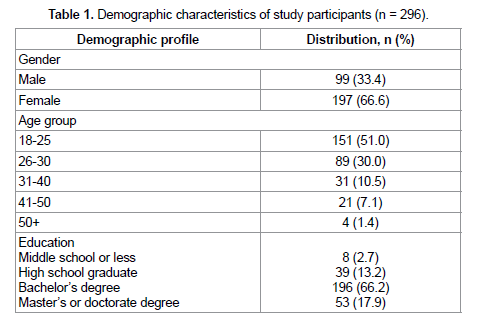
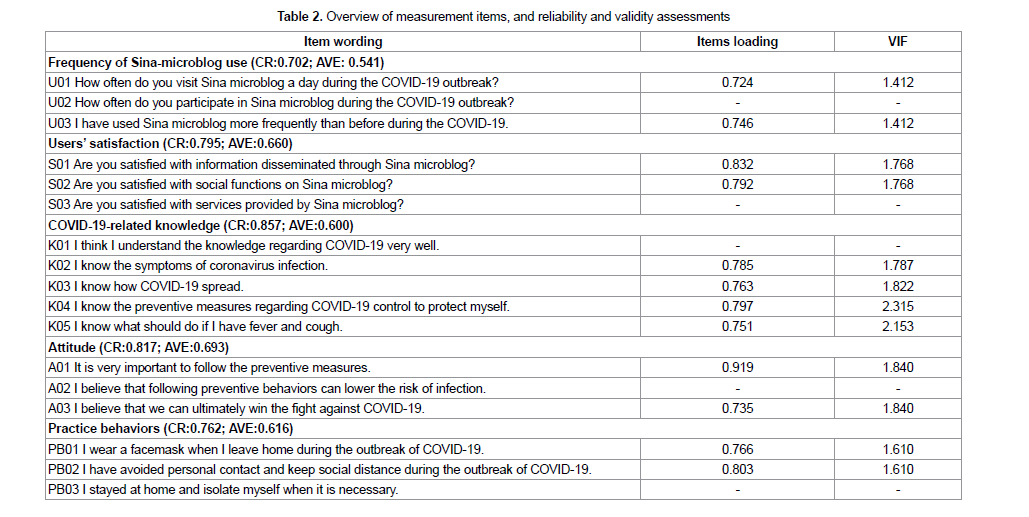

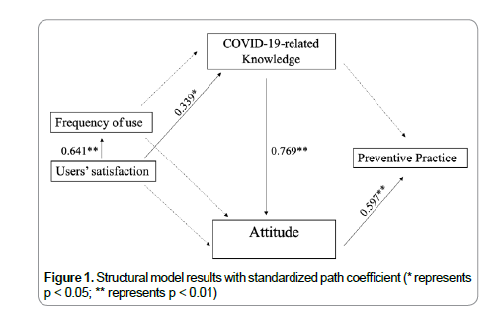
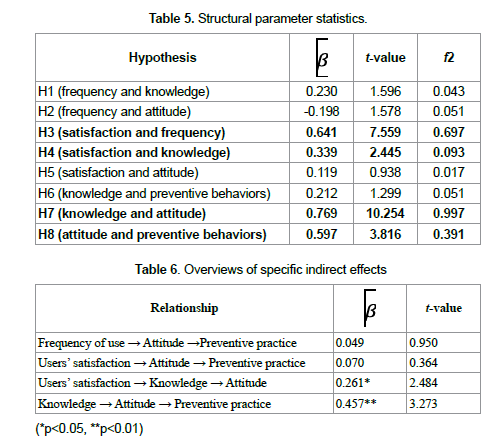
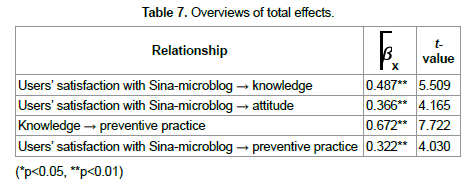
 Open Access
by Scient Online is licensed.
Open Access
by Scient Online is licensed.